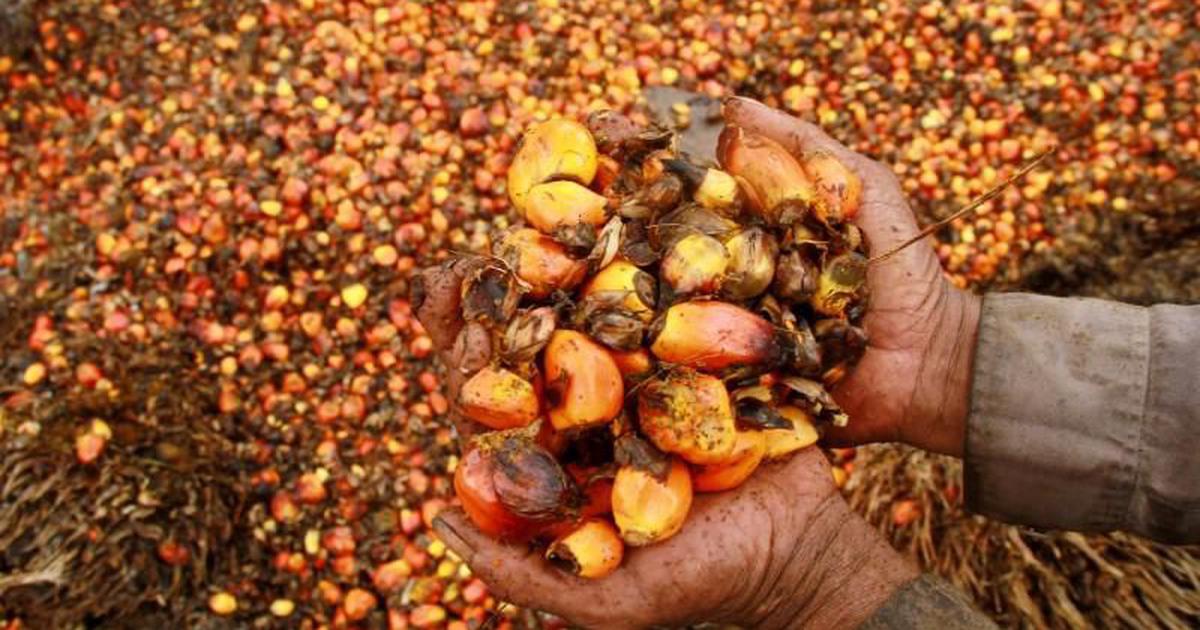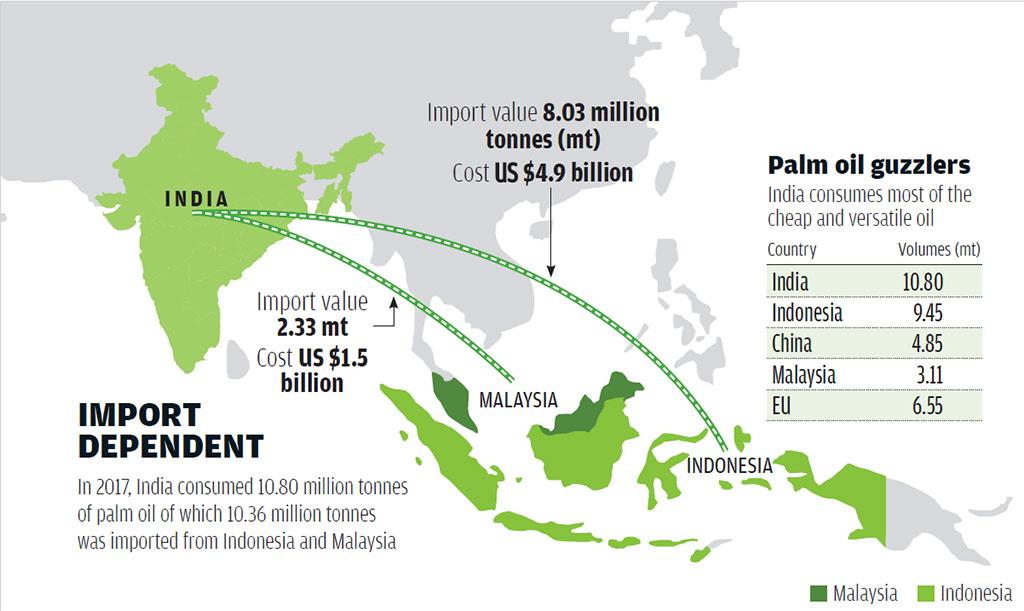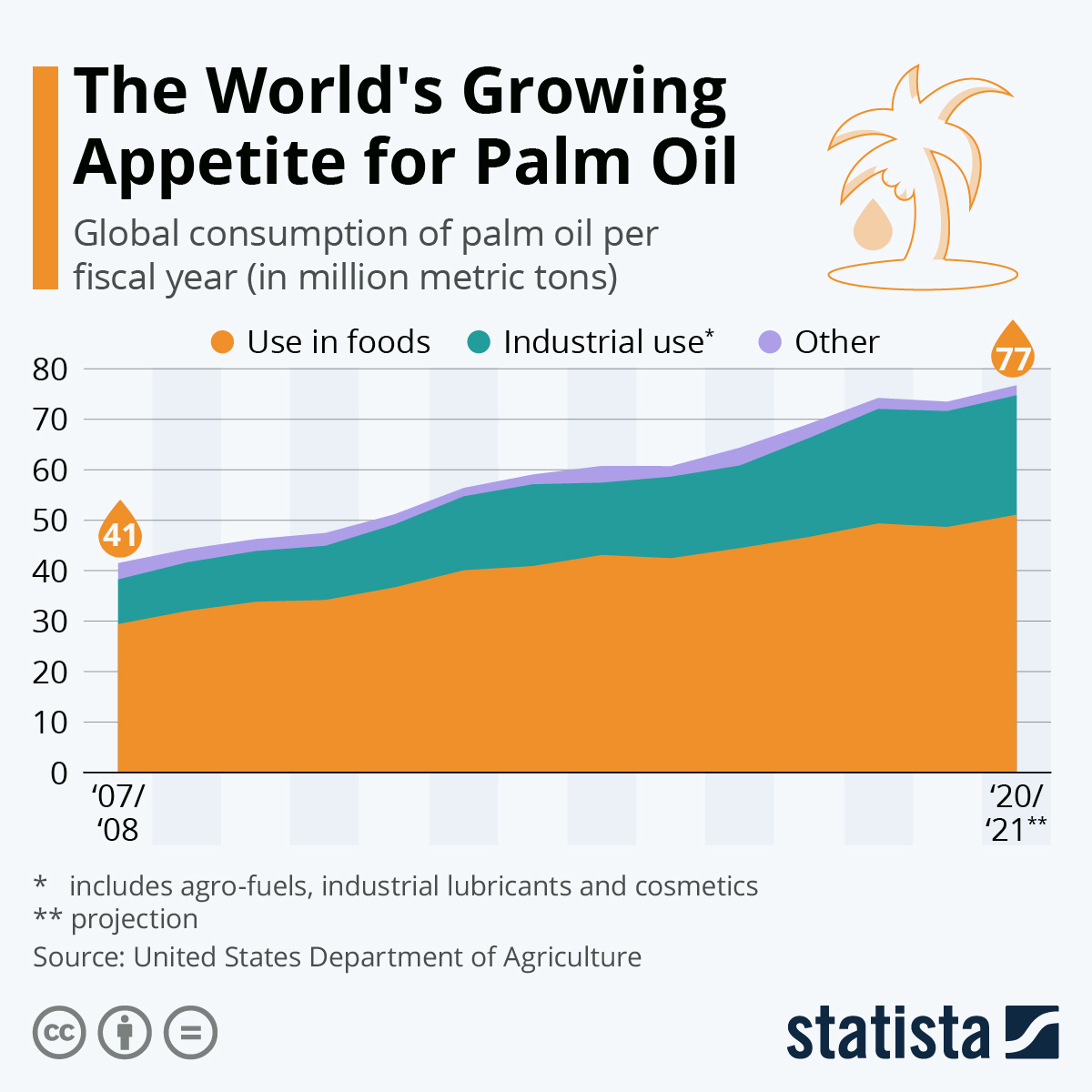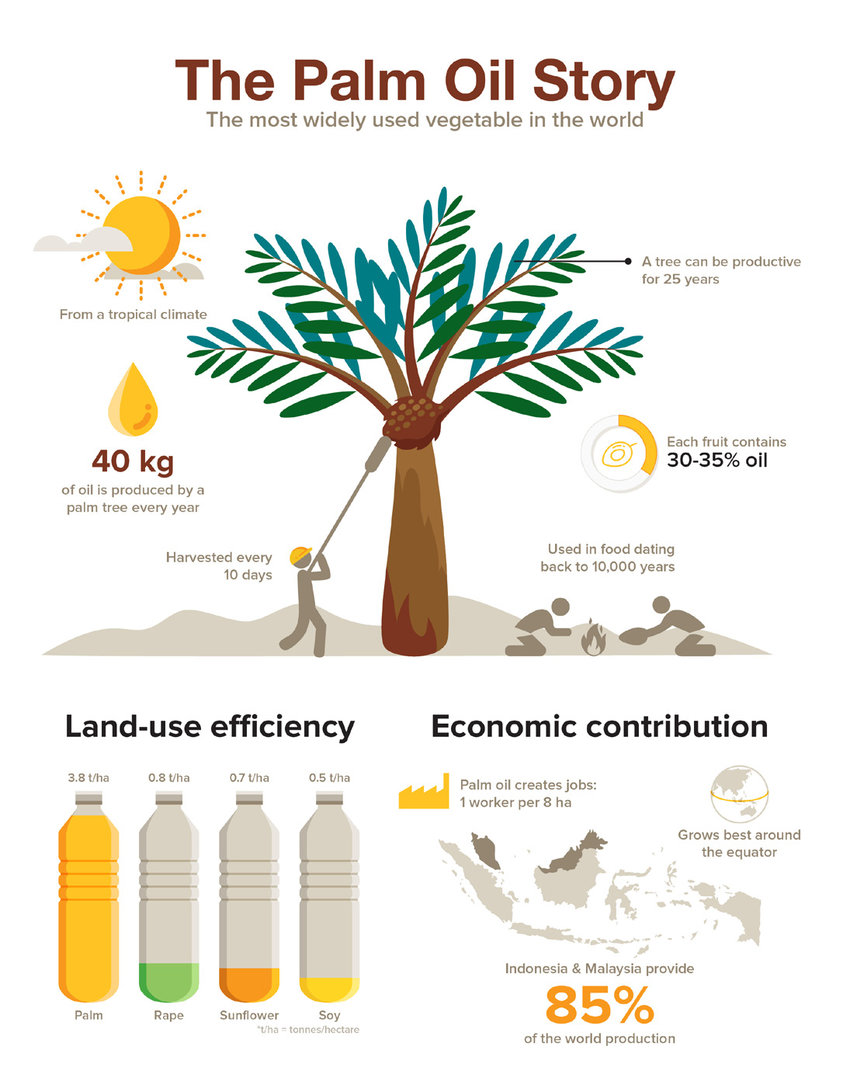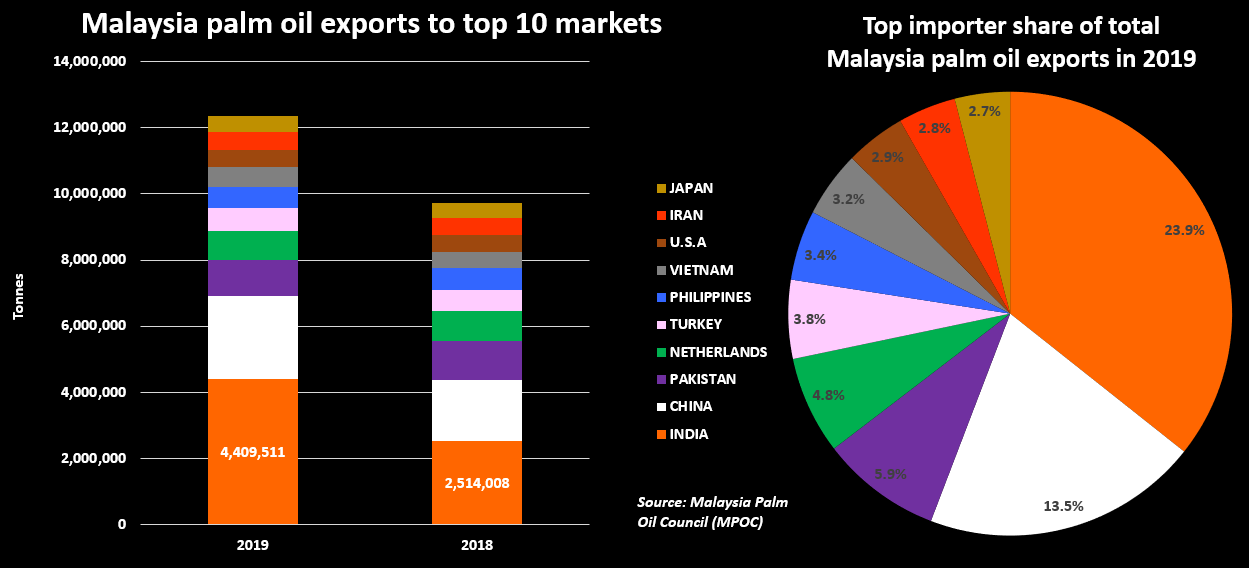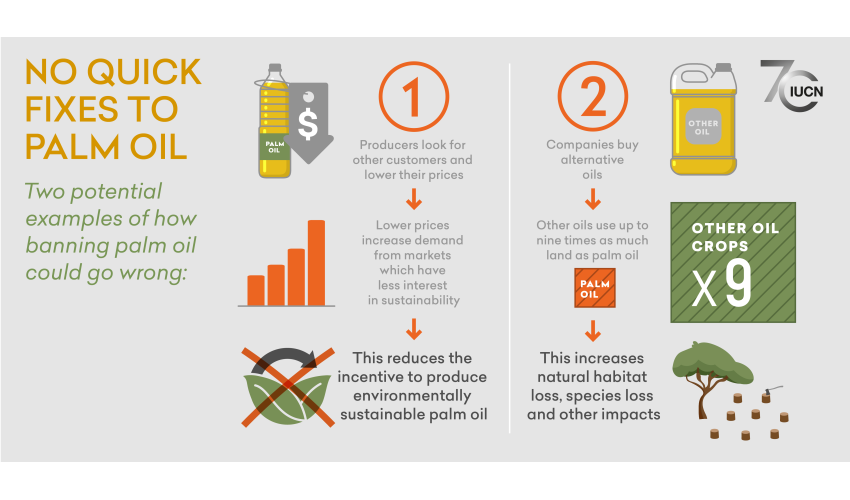While India battled the Pandemic last year, country’s entire imports valued at $11.11 billion (Rs. 82,618.50 crore) which is still lower than $480 billion spent on imports in 2019, making it one of the most important markets of the World.
Out of innate curiosity, we have come to know that India’s major imports include mineral fuels, edible oils, gems and jewellery etc.
For long, we have been trying to reduce dependence on imports but recently we have started looking inwards to be self-sustainable for future.
According to a recent report, a staggering 25 million tonnes of edible oil is required to meet its citizens’ demands in upcoming future.
Out of this, only 40 per cent is produced domestically from primary as well as secondary sources while the remaining 60 per cent is fulfilled through imports.
Several factors pertaining to geopolitics and our pride have caused us to rethink the ways an able-bodied nation can meet its needs on its own.
Imbibing the idea of domestic sustenance:
Palm oil came to the forefront during our economic retaliation against Malaysia’s Prime Minister’s comment, criticizing India’s internal policy decisions at the time.
Malaysia also suspectedly gave refuge to Zakir Naik, wanted in charges of money laundering, hate speech, and links to terrorism.
India, therefore, had cut the import duty on crude palm oil (CPO) as well as refined, bleached and deodorized (RBD) palm oil, moving it from the “free” to the “restricted” list of imports.
Nevertheless, Indonesia and Malaysia collectively account for 85% of the world’s palm oil production and India tends to be among their biggest buyers.
What is palm oil used for?
It is an edible vegetable oil that is derived from the fruit grown on the African oil palm tree.
Crude palm oil or red palm oil needs refining as it contains fatty acids, gums and wax-like substances that needs removal. Additionally, the refining increases the value of a barrel of crude oil by about 4%.
Palm oil and its kernel oil is found in approximately 50% of products in market, including food and non-food items.
Why is India in need of the oil?
The refining industry has been demanding that the import duty on refined oil be increased, which would make importing crude oil cheaper than importing refined oil. This will mainly benefit domestic refiners, which include big-ticket names like the Adani Wilmar group.
For a country with maximum households shifting choices based on price, it is cheapest and naturally available edible oil.
Plus, its tasteless feature makes it suitable to be used in every food possible ranging from baked products to fried foods.
Although WHO discourages re-using oils but this one can be used for deep frying again and is stable at high temperatures. Therefore, found profoundly in Vanaspati (hydrogenated vegetable oil).
Any restriction to this oil from outside may sadden the consumers initially but is valuable to domestic refiners in the country.
Why palm oil cultivation is beneficial to India?
The production is economically viable and comparatively rewarding. Indian population’s extreme dependence on Agriculture for subsistence is an asset here.
“Detailed analysis reveals that 4 million MT of traditional oils is being produced in the country by using 15.80 million hectares of land. This much quantity of palm oil could be produced from just 1 million hectares”; professor at Indian Institute of Public Administration (IIPA) explains.
Cultivation of palm oil across the globe, uses only 10 per cent of the farmlands and account for 35 per cent of the global vegetable oils usage.
Greater prospect for Indian farmers:
A consistent yield from the palm tree is sourced once it matures. Hence a chance for Indian farmers to enhance their monetary output from meagre land holdings.
Small and marginal farmers persistent in India, those do not enjoy the benefit of using machines to cultivate, can even grow this without the need for any big capital investment.
But palm plantations have long gestation period, that may dry out finances initially.
Sustainability: Forex loss v/s forest loss
Palm oil expansion has been claimed to threaten the forests, immediate indigenous biodiversity and natural environment based on experience recollected from Indonesia and Malaysia.
But if the steps can be taken to ensure sustainability, palm oil cultivation in India will be its best recourse for self-reliance in vegetable oils.
Malaysia has already imposed a capping of 6.5 million hectares for palm raising. Even Indonesia has declared a suspension on all new palm oil developments and has been reviewing previously-issued licenses.
All this is done to ensure that profitability in the sector does not jeopardize the ecological benefits of any forestland.
India’s approach for much-needed palm oil sustainability:
Indian Palm Oil Sustainability framework (IPOS) has been created including The Solvent Extractors’ Association of India (SEA) and the Society for Promotion of Oil Palm Research and Development as well as global non-profit Solidaridad.
National Mission on Oil Seed and Oil Palm (NMOOP) was launched in 2014-15 to be merged with the National Food Security Mission 2018-19.
IPOS will set the standards for sustainability on Indian laws, practices and market realities relevant to the sector.
Even the 2015 Amsterdam Declaration has notified to phase out all palm oil without sustainability certification by 2020.
And this foreign specie may not endanger the survival of indigenous species of India along with removing any possibility of tribal lands taken over by large farmers to gain benefits. Andhra Pradesh (83.5 percent) and Telangana accounts for about 97 percent of India’s 278,000 tonnes of crude palm oil production.
As per government of India, 6 north-eastern states – Mizoram, Arunachal Pradesh, Meghalaya, Tripura, Nagaland, Assam having a potential area of 218,000 hectares for palm cultivation has barely 20 percent under plantation (till October 2019).
Establishing a system alone may not help us, we need to ensure that deforestation does not take over in the name of food security and import reduction.
Rather, proper land-use policy can be undertaken to classify the type of lands in best use for this sort of cultivation and creating a map for it.

